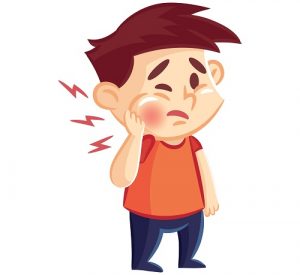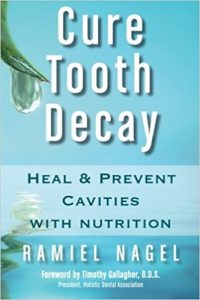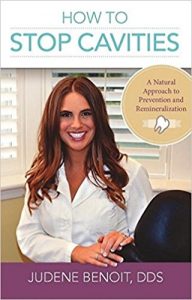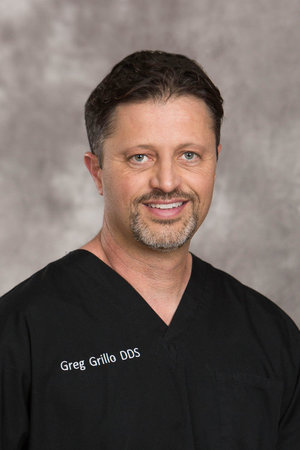Cavities Between Teeth? How to Diagnose and Treat this Common Problem
Getting cavities is often one of the biggest worries people have when it comes to their teeth. We associate cavities with children visiting dentists who eat a lot of snacks full of sugar all day, adults who drink a lot of soda, or those ugly discolorations or holes you’ll see on posters in the dentist’s office. However, we’re slowly learning that it’s not only those unhealthy eaters or the kids who get cavities. Adults get cavities too.
The fault lies, in part, in our diet. The average American eats starch or has a few different fruits throughout the day, bathing the teeth in the sugar that helps bacteria grow and produces the acids that cause tooth decay.
Cavities are an expensive problem and they can be complicated to treat. But they’re also a useful indicator of overall oral health. A cavity can help sound the alarm, signaling to you that your oral health routine isn’t getting the job done. Often, having a cavity can provide the needed motivation for healthy changes in a person’s daily routine, from nutrition choices to brushing and flossing more often.
“We routinely find multiple cavities between teeth on x-rays, usually in patients who don’t floss. If you’re a daily flosser, the odds of this type of decay is pretty low.”
Fortunately, there are many choices you can make to protect yourself and your loved ones from cavities between teeth, otherwise known as interproximal cavities. Brushing and flossing regularly and establishing a good oral healthcare routine will reduce the amount of bacteria in your mouth. Toothbrushes can only reach so much, which is why it’s important to floss, to keep bacteria from building up between your teeth where the brush can’t get at them. Buying an irrigator, which is a device that shoots out water or a cleansing solution, is another option, though many people find that flossing is enough.
Keep in mind that it’s important to brush your mouth gently so that you don’t hurt your sensitive gum tissue and the enamel in your mouth.
Routine cleaning, which should happen about every two years as recommended by dentists, is a great opportunity to identify and remove any buildup of bacteria or plaque on your teeth. Your dentist can also get rid of stains that you might have or tartar, which is a kind of plaque that has hardened, often in hard-to-reach areas—the stuff your dentist sometimes has to tap or pick at with a metal tool. Tartar can also build up just under your gum line, which can cause pain and swelling. You may notice tartar more in the mouths of people who drink a lot of coffee and smoke because tartar has so many tiny holes in its surface that it can easily appear stained. This mineral layer can turn yellow or even brown. Once you have tartar, you’ll need a dentist to scrape it out—as brushing and flossing will no longer do the job.
The cavity itself occurs when the outside of the tooth, which is calcified enamel, becomes covered in bacteria. These bacteria stick themselves into the plaque, which can accumulate between your teeth or along your gum line. The bacteria then breaks down sugars and starches, creating the damaging acid that eats at the enamel. From here, the dental cavity is created.
The first signs of a dental cavity are often tooth pain or sensitivity to cold food or drinks. Other early signs include unusually bad breath (or a bad taste in your mouth) from the multiplying bacteria. Some people find that gargling with mouthwash is helpful in these situations.
Did you know that tooth decay often causes the person to feel particularly sensitive to sweet, hot, or cold foods? Sometimes, you’ll experience pain after you eat an ice cream cone or a bowl of hot soup. Other times, you might begin to see some discoloration or even a hole in your tooth. When you allow the bacteria between your teeth to grow by eating a lot of starch and sugars, they make an acid that eats away the outside of your teeth, creating these holes. You might have trouble chewing on food with the affected tooth.
At this stage, your dentist will likely take a close look inside your mouth, examining your gums as well as your teeth. The dentist might then do a physical assessment of your teeth, poking the inside of your mouth with various tools to check for firmness. The next step often involves taking X-rays of your mouth so that you can get a better look at an oral cavity that may be forming or decay in the tooth. These X-rays are also called bite wings and they allow for precise assessment of your mouth—they’re a great tool for discovering issues early when they’re just beginning to develop.
Often a cavity must be removed with a dental drill. For this, the dentist will drill away the affected area of your tooth and will place a filling inside that space. Fillings are typically made of porcelain, silver, gold, or another material. Root canals, extraction, and crowns are other options, depending on the size and nature of the cavity.
Beyond slacking on your brushing with a quality fluoride toothpaste and flossing (and eating a bunch of processed, sugary foods), here are some other habits that can contribute to cavities: not getting enough minerals in your diet, not having enough fat-soluble vitamins (like A, D, E, and K), eating too many foods rich in phytic acid (like starchy bread, grains, and nuts), and not getting enough minerals (such as phosphorous, magnesium, and calcium).
Our teeth are such an important part of our bodies. Can you imagine a life without them? It would be tough. They grind up foods to a proper size and texture so that we’re better able to swallow and digest them. They help to maintain the structure of our faces as we age. They contribute to our ability to communicate and speak to each other. They allow us to have a strong, distinctive jaw line and help shape cheeks and the bottom half of our faces. It can be a daunting task to keep the whole set of 32 teeth clean, flossed, and clear of the sugar and starches that feed bacteria. However, it’s within everyone’s capabilities to make improvements to their dental health care regimes. Prevention is the best way to fight tooth decay. Set a good example for your friends, family, and loved ones, and start taking steps to boost your oral healthcare regime today. Your teeth and your beautiful smile will thank you.
We find that reading up on cavities can be helpful. A few books we’d recommend can be found here and here. We’re also big fans of Uncle Harry’s remineralization liquid, which you can find here.
Medically Fact-Checked & Written by Our Dental Editorial Team
You can read more about our editorial guidelines by clicking this link and learn more about the Emergency Dentists USA editorial team here.








